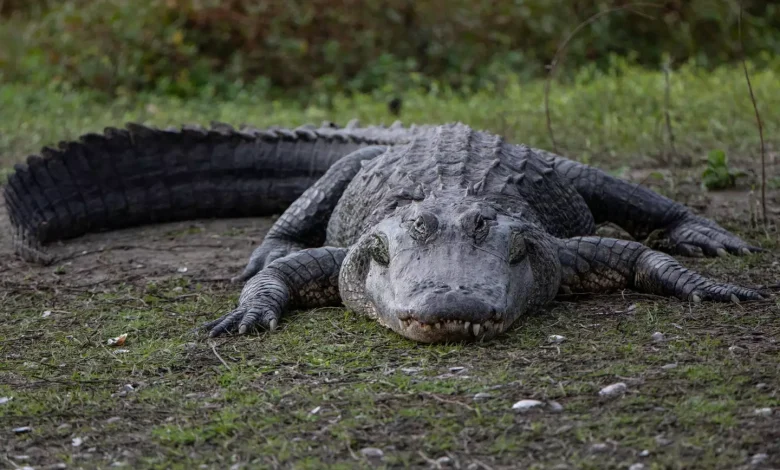Where Do Alligators Live and Why?

Alligators are fascinating creatures that have captured human interest for centuries. These powerful reptiles are often seen as symbols of the wild, representing both danger and the untamed beauty of nature. Understanding where alligators live and why they choose specific habitats is crucial for their conservation and for appreciating the ecological roles they play. This article delves into the types of habitats alligators prefer, their geographic distribution, the factors influencing their habitat selection, and the conservation efforts aimed at protecting these incredible animals.
Types of Alligators
There are two main species of alligators:
- American Alligator (Alligator mississippiensis)
- Chinese Alligator (Alligator sinensis).
The American Alligator is much more widespread and well-known, thriving primarily in the southeastern United States. In contrast, the Chinese Alligator is critically endangered and found in a very limited range in the Yangtze River basin in China. Understanding the differences between these two species helps highlight the unique environmental needs and challenges each faces.
Natural Habitats of Alligators
Alligators thrive in a variety of freshwater environments. They are commonly found in swamps, marshes, rivers, and lakes. These habitats provide the necessary conditions for alligators to hunt, breed, and take shelter.
- Swamps and Marshes: Swamps and marshes are prime habitats for alligators. The dense vegetation provides ample cover for hunting and nesting, creating a safe environment for raising their young.
- Rivers and Lakes: Alligators also inhabit rivers and lakes, where they can find abundant food sources and suitable conditions for basking in the sun. The flowing water of rivers offers a steady supply of prey, while lakes provide large, stable environments for alligator populations.
- Coastal Areas: In addition to freshwater habitats, alligators are sometimes found in coastal areas, particularly in brackish waters where freshwater meets the sea. These environments can offer a mix of food sources and unique shelter opportunities.
Geographic Distribution
The American Alligator is primarily found in the southeastern United States, with the largest populations in Florida, Louisiana, and Texas. These states offer ideal conditions for alligator populations to thrive, including warm climates, abundant wetlands, and protected areas. In contrast, the Chinese Alligator’s habitat is restricted to the Yangtze River basin in China. This limited range makes the Chinese Alligator much more vulnerable to habitat loss and environmental changes.
Factors Influencing Habitat Selection
Several factors influence why alligators choose specific habitats:
- Water Temperature and Quality: Alligators prefer warm, clean water for optimal health and breeding success. They are ectothermic animals, relying on external temperatures to regulate their body heat.
- Availability of Food: Alligators need a plentiful supply of fish, birds, mammals, and other prey to sustain themselves. The presence of diverse and abundant food sources is a key factor in habitat selection.
- Shelter and Nesting Sites: Dense vegetation and secluded areas are crucial for alligators to build nests and protect their young. Alligators construct nests using mud, vegetation, and other materials to provide a safe environment for their eggs.
- Human Impact and Habitat Preservation: Human activities, such as development, pollution, and climate change, can significantly affect alligator habitats. Efforts to preserve and restore these areas are vital for their survival.
Importance of Wetlands
Wetlands play a crucial role in alligator survival. These ecosystems provide the necessary conditions for alligators to live, hunt, and reproduce. Wetlands also offer numerous ecological benefits, such as water purification, flood control, and habitat for a diverse range of species. The preservation of wetlands is essential not only for alligators but also for the overall health of the environment.
Adaptations to Habitat
Alligators have evolved several adaptations that help them thrive in their environments:
- Physical Adaptations: Alligators have powerful jaws, sharp teeth, and strong tails for hunting and swimming. Their tough skin offers protection, while their eyes and nostrils are positioned on top of their heads for easy breathing and seeing while submerged. These physical features enable alligators to be effective predators and to navigate their aquatic habitats efficiently.
- Behavioral Adaptations: Alligators are known for their ability to run fast on land for short distances, which helps them catch prey and escape threats. They are also excellent swimmers, using their tails to propel themselves through the water. Seasonal movements and hibernation during colder months help them conserve energy and survive in varying conditions. Alligators are also known to engage in basking behaviors, warming their bodies in the sun to regulate their temperature.
Conservation and Protection
Alligator habitats face numerous threats, including habitat destruction, pollution, and climate change. Conservation efforts are crucial to protect these reptiles and their environments. In the United States, many wetlands are protected by law, and alligator hunting is regulated to prevent overexploitation. Conservation programs focus on habitat preservation, public education, and research to ensure sustainable alligator populations. In China, efforts are underway to preserve the remaining habitats of the Chinese Alligator and to breed them in captivity for reintroduction into the wild. International collaboration and funding are essential to support these initiatives.
Conclusion
Understanding where alligators live and why they choose certain habitats is essential for their conservation and for maintaining the ecological balance of their environments. By protecting alligator habitats, we not only ensure the survival of these remarkable reptiles but also preserve the vital wetlands that benefit countless other species and provide crucial ecological services. Public awareness, legal protections, and active conservation efforts are all necessary to secure a future for alligators and the ecosystems they inhabit.




